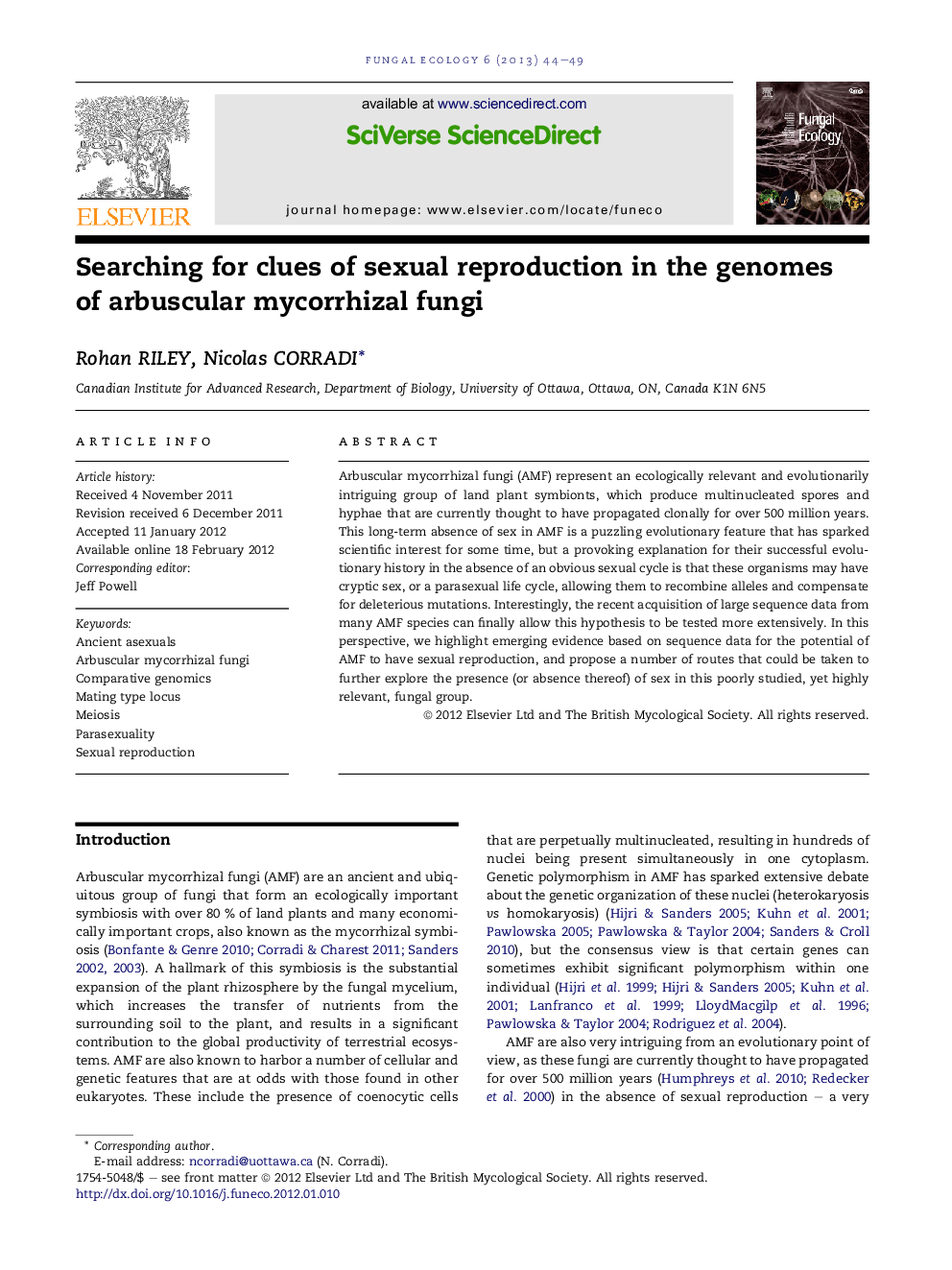| Article ID | Journal | Published Year | Pages | File Type |
|---|---|---|---|---|
| 2053976 | Fungal Ecology | 2013 | 6 Pages |
Arbuscular mycorrhizal fungi (AMF) represent an ecologically relevant and evolutionarily intriguing group of land plant symbionts, which produce multinucleated spores and hyphae that are currently thought to have propagated clonally for over 500 million years. This long-term absence of sex in AMF is a puzzling evolutionary feature that has sparked scientific interest for some time, but a provoking explanation for their successful evolutionary history in the absence of an obvious sexual cycle is that these organisms may have cryptic sex, or a parasexual life cycle, allowing them to recombine alleles and compensate for deleterious mutations. Interestingly, the recent acquisition of large sequence data from many AMF species can finally allow this hypothesis to be tested more extensively. In this perspective, we highlight emerging evidence based on sequence data for the potential of AMF to have sexual reproduction, and propose a number of routes that could be taken to further explore the presence (or absence thereof) of sex in this poorly studied, yet highly relevant, fungal group.
► Arbuscular mycorrhizal fungi (AMF) are ecologically relevant symbionts of land plants. ► AMF are thought to have propagated clonally for over 500 million years. ► Emerging evidence based on sequence data suggests AMF could undergo cryptic sex. ► Many routes that could be taken to further explore sexuality in AMF are proposed.
